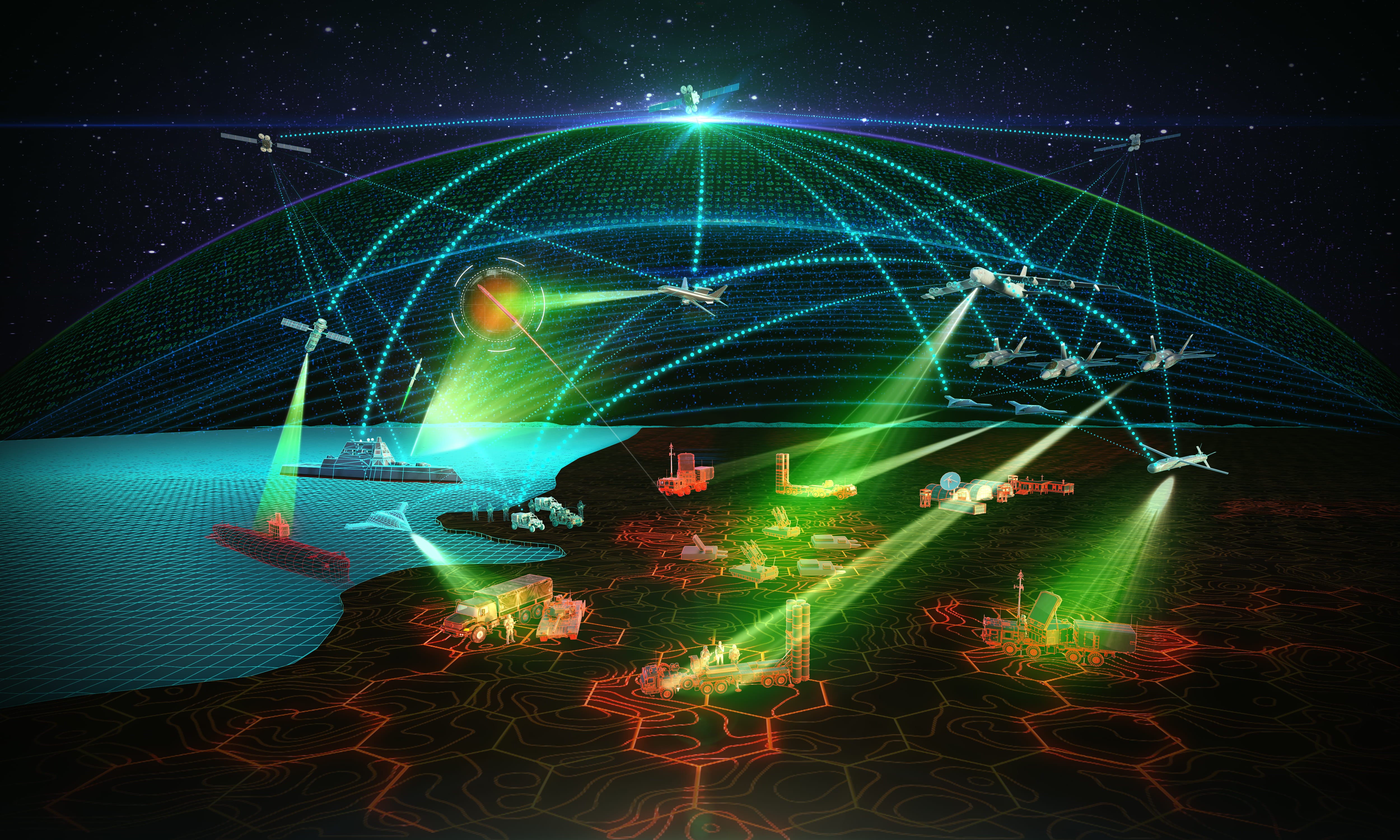SAN DIEGO — Words have meanings. They matter.
And the U.S. Navy rear admiral at the helm of the Joint All-Domain Command and Control Cross-Functional Team, Susan BryerJoyner, is a stickler.
At the West 2023 conference in San Diego this week, she sought to clear up misconceptions about JADC2, the Defense Department’s ongoing attempt to seamlessly connect all corners of the military.
“Command and control is a function that we have been doing since the start of any conflict or competition. It’s a verb. All of a sudden, I add ‘joint’ and ‘all-domain’ to the beginning of that verb, and people treat it like a noun. Well, it must be a system? Oh, it’s a system of systems. Wait? It’s got to be a program of record,” she said Feb. 15. “What I’ve been reinforcing with my team and what I would encourage you to help me with: JADC2 is a verb.”
A lucid definition of JADC2 — a multibillion-dollar venture meant to link forces and their databases across land, air, sea, space and cyber — is notoriously difficult to pin down. The Army, Air Force and Navy all have their own contributions to the endeavor and share varying amounts of information about them.
Some defense officials pitch JADC2 as an ecosystem, not a singular technology, describing the concept as a modernization of the military with no actual finish line in sight. And at least one Army leader has likened JADC2 to knee cartilage; without it, Maj. Gen. Dustin Shultz said late last year, “you can’t run.”
By connecting once-disparate databases, resources, sensors and weaponry, the U.S. believes it can move, shoot, react and refuel with more precision and efficiency than adversaries. Such accuracy and speed, defense officials say, is crucial in a contest with tech-savvy competitors, including China and Russia.
China, itself, is developing a wide-ranging method to counter JADC2: Multi-Domain Precision Warfare, a netting of command and control, communications, computers, intelligence, surveillance and reconnaissance to quickly coordinate firepower and expose foreign weaknesses, according to the annual China Military Power Report.
“I am here to tell you, if we get Joint-All Domain Command and Control right, we will change the way we fight, from competition to conflict,” BryerJoyner said. “It is about how we go into battle, how we command and control the joint force. That is what is very important.”
But JADC2 as a popular term, the admiral added, is at risk of abuse.
“It’s become a buzzword,” BryerJoyner said. “That buzzword has been attached to multiple things, and those multiple things may or may not look like — feel like, actually have anything to do with — what I’m trying to accomplish.”
The Defense Department in 2022 rolled out public versions of its JADC2 strategy and implementation plan, meant to guide the connectivity campaign and provide outside observers a glimpse at what’s under the hood.
BryerJoyner said one of the first things she did when she took over at the cross-functional team was “looking at the expanse of everything that we were doing” and, in turn, referencing the strategy.
“If we’re going to talk about capabilities, we talk about JADC2 capabilities, JADC2 systems, JADC2 efforts,” she said. “It’s important, because we must speak clearly to each other about what we’re trying to accomplish.”
Colin Demarest was a reporter at C4ISRNET, where he covered military networks, cyber and IT. Colin had previously covered the Department of Energy and its National Nuclear Security Administration — namely Cold War cleanup and nuclear weapons development — for a daily newspaper in South Carolina. Colin is also an award-winning photographer.








